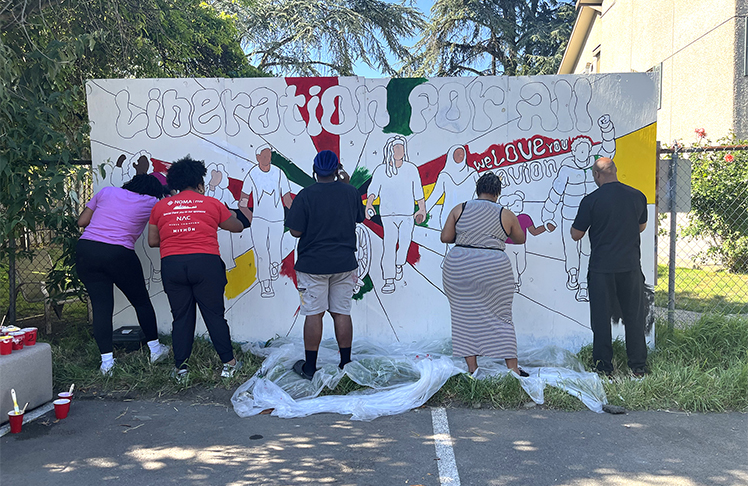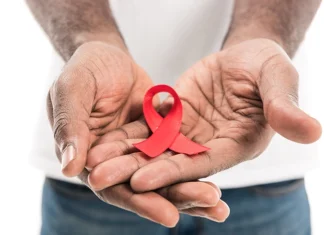
By Aaron Allen, The Seattle Medium
For the past decade, Creative Justice has been a beacon of hope and transformation for youth in the Seattle area, offering a unique approach to addressing systemic inequities in the juvenile justice system. This nonprofit organization combines art with mentorship to create spaces where young people can heal, express themselves, and find support as they navigate complex societal challenges.
Celebrating 10 years of care and restoration, Creative Justice will be hosting a series of events honoring the important work that has been done in support of our community’s youth. Thursday, December 5 at Indigo Slate, 316 2nd Ave S. in Seattle the event celebrates with a Gallery Opening and Friday, December 6, at the Washington Hall, located at 153 14th Avenue in Seattle, Creative Justice presents “A Film Release”. All events start at 6:00pm. The celebration will continue March 1, 2025 Creative Justice kicks off “Let’s Party” held at Indigo Slate.
Nikkita Oliver, Executive Director of Creative Justice, describes the organization’s mission as one that not only helps young people heal but also dismantles harmful systems.
“What would it look like to think about art as a tool for healing, and art as a tool for repair, and art as a tool for helping young people be more rooted and grounded in their communities and who they are?” Oliver asks. “And what would it look like if that was a pilot project where the goal was to actively do work to dismantle the school-to-prison pipeline?”
Founded by Aaron Counts, Creative Justice initially started as a diversion program aimed at keeping young people out of the criminal justice system. Over time, it has evolved into a robust community of care.
“I really, of all the work I’ve done, am the most proud of the work of Creative Justice,” Counts said. “We started as just a little diversion program to keep some young people from getting locked up in the system, but since that time, it’s evolved into just a real community of care.”
Art is at the heart of Creative Justice’s work, serving as a conduit for personal growth, community building, and advocacy. Art amplifies the voices of marginalized youth, allowing them to express their lived experiences and engage in problem-solving. It fosters skills like teamwork, communication, and collaboration while addressing systemic issues like racism, classism, and other forms of oppression.
Data has shown that financial insecurity is a significant factor in youth involvement in crime. Recognizing this, Creative Justice provides stipends to participants as an incentive to attend workshops and as a way to alleviate economic pressures.
“So, every young person that enrolls in Creative Justice receives a stipend for every class,” Oliver said. “They attend every workshop; we pay them because what we’ve learned from young people is many of them make decisions to violate laws based on needing access to money or resources. And so, one way to intervene is to provide them through this safer space, through this arts and healing space, access to those resources.”
The organization goes beyond financial support, offering essential items like clothing, hygiene products, and even assistance with rent or restitution payments when necessary.
“We also have a very robust basic needs program where, until resources run out each year, we will pay families’ rent. We will help young people pay off their restitution so their general juvenile court record can be cleared,” Oliver said. “We do twice-yearly major distributions of resources: backpacks, school supplies, winter coats, shoes. And then we maintain a pantry here in the building where young people can take whatever food or hygiene products they need at any time—they don’t have to ask.”
Creative Justice works with approximately 120 young people annually, offering mentorship and opportunities for growth. Many participants stay involved long after their time in the program, returning as mentors or staff through the Fellow Program for individuals aged 22 and older. This cyclical nature of care and giving back strengthens the program’s impact.
“Really looking at the experiences of the most marginalized of our young people and just trying to create a space for healing, we haven’t always recognized the healing that needs to happen,” Counts said. “In doing that healing, I feel like Creative Justice is a great model. It’s modeling for the adults that work in the program and the young people that are participants, and it just is the kind of community I want to live in.”
The program brings together young people, artists, and legal experts—including judges, public defenders, and prosecutors—to reimagine how art and community can reshape the justice system.
“Young people really started to find Creative Justice as a space to not just handle their court obligations but as a space to be deeply connected to community,” Oliver said.
The impact of the program is perhaps best illustrated in the stories of participants who have used their skills to make meaningful change. Oliver recalls a powerful example of conflict resolution within the program.
“One of the most powerful things that I’ve personally observed working here is watching a young person who had been with us for a number of years,” Oliver said. “He was active in the streets, and a couple of young people came to the program who had beef with each other, and this young man actively intervened.”
“He used the skills and the tools that he’s learned here, and he helped them negotiate,” Oliver continued. “What does peace look like in this space? That transformed how those young people operated with each other outside of this space. So, I know young people, when given the right tools and support, are actually capable of helping to intervene in the violence we see in our communities and capable of helping to keep each other safe.”
Creative Justice also uses art to address the root causes of incarceration. Through creative expression, young people can reflect on their social positions, address systemic inequities, and envision a more just future. The program’s emphasis on community-building promotes a sense of belonging, empowering participants to see themselves as agents of change.
Looking ahead, Creative Justice continues to expand its reach and deepen its impact, guided by a vision of a world where young people are supported, not criminalized.
“My faith is where my help comes from,” Oliver said. “With the help of people in this community, I have been able to sustain this place, this business. It’s still a presence in the neighborhood and in the community, and expanding. These are the kinds of things that are really rewarding because everyone gets a chance to sample what I do, and I’m a service to each community.”
Through its innovative approach, Creative Justice has proven that art, when combined with care and resources, can transform lives. It has become a model of what a healing-centered, equity-driven community can look like.
“It’s not just about keeping kids out of the system,” Counts said. “It’s about showing them what’s possible when we support each other, heal together, and build a better future for everyone.”



